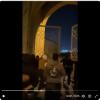
Breaking News
 Why Venezuela's Oil Matters So Much | The Hidden History Behind the Crisis
Why Venezuela's Oil Matters So Much | The Hidden History Behind the Crisis
 IRANIAN PROTESTERS BROKE GATES OF AYATOLLAHS' COMPOUND IN FARS PROVINCE
IRANIAN PROTESTERS BROKE GATES OF AYATOLLAHS' COMPOUND IN FARS PROVINCE
 'Sounds good to me': Trump suggests Rubio as Cuba's president, issues warning
'Sounds good to me': Trump suggests Rubio as Cuba's president, issues warning
 Trump asked US special forces to plan Greenland invasion,...
Trump asked US special forces to plan Greenland invasion,...
Top Tech News
 World's most powerful hypergravity machine is 1,900X stronger than Earth
World's most powerful hypergravity machine is 1,900X stronger than Earth
 New battery idea gets lots of power out of unusual sulfur chemistry
New battery idea gets lots of power out of unusual sulfur chemistry
 Anti-Aging Drug Regrows Knee Cartilage in Major Breakthrough That Could End Knee Replacements
Anti-Aging Drug Regrows Knee Cartilage in Major Breakthrough That Could End Knee Replacements
 Scientists say recent advances in Quantum Entanglement...
Scientists say recent advances in Quantum Entanglement...
 Solid-State Batteries Are In 'Trailblazer' Mode. What's Holding Them Up?
Solid-State Batteries Are In 'Trailblazer' Mode. What's Holding Them Up?
 US Farmers Began Using Chemical Fertilizer After WW2. Comfrey Is a Natural Super Fertilizer
US Farmers Began Using Chemical Fertilizer After WW2. Comfrey Is a Natural Super Fertilizer
 Kawasaki's four-legged robot-horse vehicle is going into production
Kawasaki's four-legged robot-horse vehicle is going into production
 The First Production All-Solid-State Battery Is Here, And It Promises 5-Minute Charging
The First Production All-Solid-State Battery Is Here, And It Promises 5-Minute Charging
 See inside the tech-topia cities billionaires are betting big on developing...
See inside the tech-topia cities billionaires are betting big on developing...
Prototype gravity-based energy storage system begins construction

A Scottish company called Gravitricity has now broken ground on a demonstrator facility for a creative new system that stores energy in the form of "gravity" by lifting and dropping huge weights.
If you coil a spring, you're loading it with potential energy, which is released when you let it go. Gravitricity works on the same basic principle, except in this case the springs are 500- to 5,000-tonne weights. When held aloft by powerful cables and winches, these weights store large amounts of potential energy. When that energy is needed, they can be lowered down a mineshaft to spin the winch and feed electricity into the grid.
Gravitricity says that these units could have peak power outputs of between 1 and 20 MW, and function for up to 50 years with no loss of performance. Able to go from zero to full power in under a second, the system can quickly release its power payload in as little as 15 minutes or slow it down to last up to eight hours.
To recharge this giant mechanical battery, electricity from renewable sources power the winches to lift the weights back to the top. In all, the system has an efficiency of between 80 and 90 percent.

 Storage doesn't get much cheaper than this
Storage doesn't get much cheaper than this

